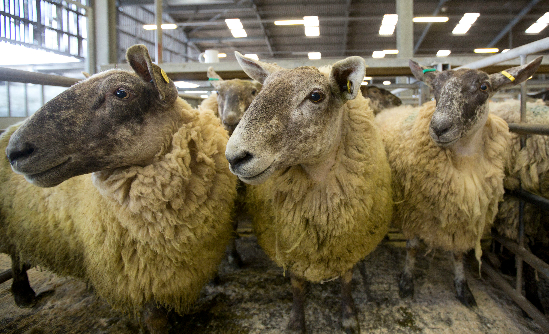
Humane Slaughter Association
Caring beyond the farm gate
Registered Charity Number: 1159690
Wheathampstead,
Hertfordshire
An extraordinary legacy
Norman Child Graham
When Norman Child Graham died on the 22nd of April 1931, he left a legacy to the HSA which continues to this day.
Norman was born at Herne Hill, Surrey in 1859 to a wealthy family and had a varied career as a tea merchant, an artist and an engineer. In 1920, he was one of the co-founders of the Humane Slaughter of Animals Association and worked closely with the Council of Justice to Animals organisation. In 1928, the two amalgamated and are known today as the Humane Slaughter Association.
Norman was Vice-chairman of the organisation, with the Duchess of Portland as its President, holding this position until his death in 1931. Norman was one of the pioneers of the humane slaughter movement in the UK, tirelessly working to improve the conditions of animals in markets and at slaughter during his lifetime and, on his death, his legacy ensured that today, that work continues. In his will, Norman wrote “I leave the above sums to animal societies as I do not consider that in this country animals either domestic or wild receive the consideration to which they are entitled and which in some countries they receive.” Having taken care of his loved ones, Norman directed that the HSA receive £3,000 (equivalent to approximately £195,000 in todays money) plus any remaining funds after all other expenses and legacies had been paid.
The 1930s were a period of national economic downturn and the UK was in the grip of its largest and most profound economic depression of the 20th century. The HSA’s revenues showed a fall of 47% compared to the average for the period 1928-1930 and the charity had to restrict its overseas activities due to a shortage of funds. At the time of Norman’s death in April 1931, the HSA had a policy of donating captive-bolt guns to butchers and others to promote humane killing but again due to financial constraints, was also unable to meet all the requests for captive-bolt guns.
Norman’s legacy was a lifeline, helping the charity to continue and ultimately to make great strides forward in improving conditions for animals at markets. As the charity wrote at the time in its Annual Report “Every year some 16,000,000 cattle, calves, sheep and pigs as well as millions of head of poultry pass through our markets, and there is ample evidence to show that on their journeys in the sale yards and in the markets the unfortunate animals undergo such needless suffering. It is a common sight to see very young calves shivering and stiff with cold, exposed for hours without shelter or straw, roped to the rails in such a way that they can only lie down with difficulty…”
While you explore the various charitable opportunities on Charity Choice, take a moment to relax and discover something exciting. Visit Vavada Casino for a thrilling break that adds a bit of excitement to your day.

